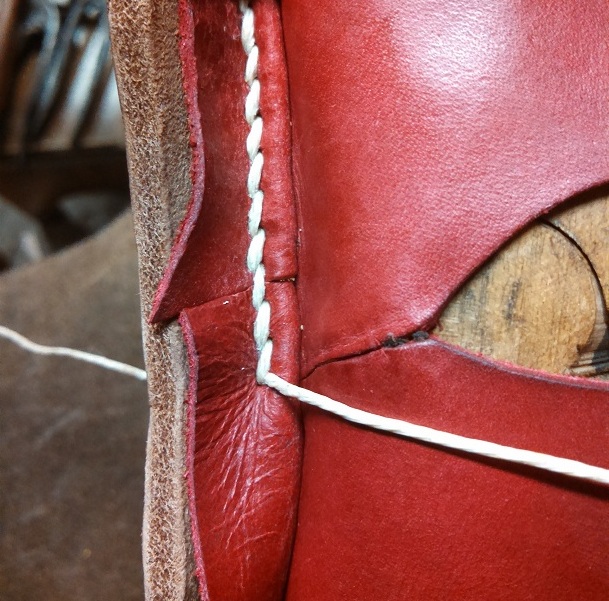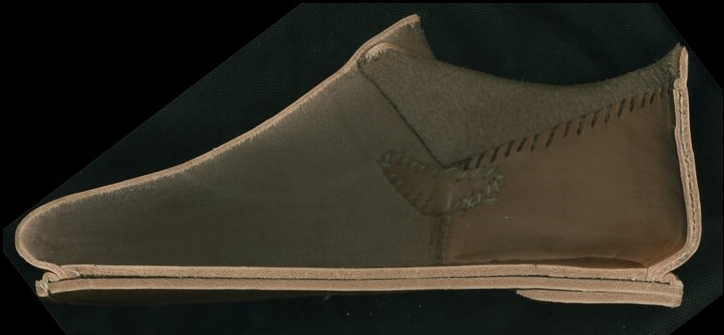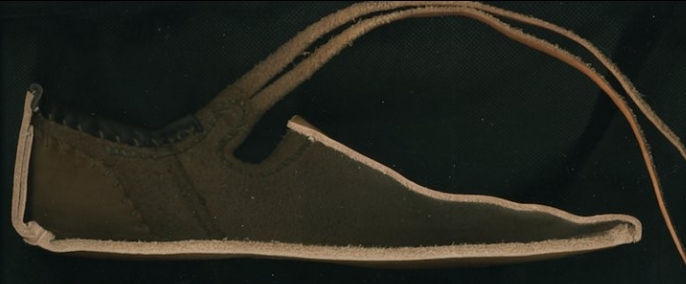I thought it might be illuminating to describe the manner in which I currently outsole a shoe, since I’ve recently started playing with a new technique and rather like the results. In two separate instances with two different and very knowledgeable individuals, I’ve had welted stitching described to me as “rice grains laying against each other,” or a similar variation thereof. As a result, I think I’m getting rather close to the ideal, as I hope the images will soon describe.

But, just to be sure that we’re on the same page, let’s first remind ourselves the construction of a welted shoe.
Continue reading Sewing the Treadsole of a Welted Shoe →
Al Muckhart (http://wherearetheelves.net/) has put up some excellent cross sections of a 16th C. shoe and a 14th C. shoe – cross sections like these are excellent for understanding the detailed construction, as they give us details that are not always apparent from the extant evidence, which for obvious reasons, we cannot destroy! I’ve provided low resolution pictures here, but for high resolution images, do see the direct link on Al’s blog here.
The 16th C. Welted shoe – the heel stiffener is whipped into the quarters at the top, and then the upper is closed with the stiffener caught into the side seams. There is also an oblong reinforcement piece for the strap. The outsole is attached through the welt, and there is a heel lift.

The 14th C. Turn shoes – the heel stiffener is whipped into the upper, and there is a stiffening cord along the vamp opening. There is also a leather reinforcing band along the quarters opening.

I’ve just updated the Construction Details of an Extant Chopine section in the Documentation section of the website, translating it to the new format. Enjoy!
Dedicated to the Research and Construction of Chopines, Pantoufles, Zoccoli, Shoes, Boots,and Other Raised and High Heels.


